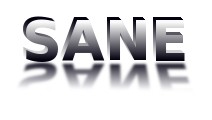“Be it a vision, a mission, a strategy or a plan, in the end,
it is the execution that makes it happen”
Companies put every possible bit in place to make execution
succeed. It is widely believed that one of the key attributes for achieving sustainable
competitive advantage is excellence in execution capability.
However, it is observed that different departments of an
organization have different perceptions, ways and methodologies for making the
execution successful for instance – Quality Consultants insist on strict
adherence with standard processes for ensuring a perfect execution or (say) Subject
Matter Experts (SMEs) suggest mastering the domain specific dynamics can make
execution successful.
But, howsoever good the strategy be and howsoever good the synchronized
efforts of all the departments function to create a flawless support mechanism
to facilitate smooth execution, eventually, the onus to perform for intended
results comes to the Core Execution Team.
A team comprises of individuals committed towards achieving a
common goal. Therefore, it is important
for every member of a team to streamline individual efforts keeping in view the
shared interest of the team.
Contribution made by a cohesive and coherent team is much
more than sum of individual contributions put-up by its team-members. This is
so, because shared values, mutual trust and collective recognition drives each
team member to apply herself / himself to a greater extent for achieving common
goals.
What makes a team of professionals stand out? What should a
team leader do to elevate the performance of its team to highest possible levels?
These are among the common questions, which usually keep on getting repeated during
informal discussions among professionals belonging to any field, any level and
any region.
Here is my take on the topic, the two things that I consider
most important in making the team perform to the best of its potential are:-
1.
Clarity
– Clarity in the minds of team-members on questions like:
a. What exactly a team member needs to
do?
b. What other team members are supposed
to do?
c. What exactly is the goal?
d. What is the evaluation criteria for
the team and for individuals?
2.
Consensus
- Consensus among the team members on issues like:
a. How can the goals be achieved?
b. What makes just and fair approach for
the individual interest and for the interest of the team?
c. Reward mechanism
d. The vision, the mission and future prospects
of the team
 |
| Clarity & Consensus in Two Dimensional View |
The adjoining figure presents, extent of clarity and extent
of consensus in a two dimensional view. This figure is drawn to explain my personal
observations on characteristics of teams with respect to these two aspects
(Clarity and Consensus). Based on the figure, my general observations are listed in following four points:-
A.
Team
with High degree of clarity and Low degree of Consensus (marked as A in figure)
a. Reasonable Team Performance
b. Politically Charged Work Environment
c. Low Degree of Sustainability (Poor
Outlook for Long Term Prospects)
d. High Attrition Rate
e. Limited Access to Information to Team
Members
f. Limited Application of Professional
Skills by Team Members
B.
Team
with High degree of clarity and High degree of Consensus
a. Excellent Team Performance
b. Profession Focused Work Environment
c. High Degree of Sustainability (Good
Outlook for Long Term Prospects)
d. Low Attrition Rate
e. Easy Access to Information to Team
Members
f. Excellent Application of Professional
Skills by Team Members
C.
Team
with Low degree of Clarity and Low degree of Consensus
a. Poor Team Performance
b. Hostile Work Environment
c. Low Degree of Sustainability (Poor
Outlook for Long Term Prospects)
d. Very High Attrition Rate
e. Poor Access to Information to Team
Members
f. Poor Application of Professional
Skills by Team Members
D.
Team
with Low degree of Clarity and High degree of Consensus
a. Poor Team Performance
b. Hierarchy and Team Spirit Driven Work
Environment
c. Low Degree of Sustainability (Poor
Outlook for Long Term Prospects)
d. Average Attrition Rate
e. Limited Access to Information to Team
Members
f. Poor Application of Professional
Skills by Team Members
In the end, one must NOT forget that the only way clarity and
consensus can be increased within a team is through COMMUNICATION. Establishing
a formal way of communication within a team and promotion of informal way of
communication accommodating diverse views should be one of the very first thing
a team leader should ensure.
/*******************/

No comments:
Post a Comment